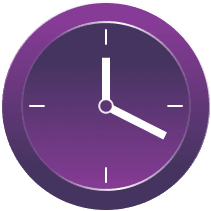The surge in the popularity of messaging apps presents both an unparalleled opportunity and a fiercely competitive landscape for businesses that aim to create their own chat solution.
This blog post is not just a technical guide on how to make a messaging app; it is a strategic compass for CEOs, project managers, and CTOs navigating the complex route to custom software development and success in the messaging app market.
Competitive Analysis: Leading Chat App Examples
Before you start creating your chat app, it’s crucial to understand the competitive landscape. Learning from successful chat apps can guide your app’s feature set and give you insight into what works and what doesn’t.
 Image credit: Spectrum
Image credit: Spectrum
With over 2 billion users, WhatsApp sets a high watermark for the messaging app world. The simplicity of user sign-up and interface, end-to-end encryption, and voice and video call features are just some of the reasons why this app stands out.
A natural extension of social networking, Facebook Messenger boasts over a billion active users. Integration with other popular services like Uber and Spotify, chatbots for businesses, and a growing e-commerce platform are key elements of its success.
WeChat's dominance in China is unprecedented. It combines messaging with social media, mobile payment, gaming, and even food delivery. WeChat's comprehensive service offerings demonstrate how a messaging app can become an entire ecosystem.
Slack caters to a different market with its focus on business communication. Its emphasis on channels and integrations with a myriad of business tools has made it a staple in many workplaces.
Studying these examples is not about replicating their models but about distilling the essence of what has made them successful and applying those learnings to your unique proposition.
Time & Cost to Build a Chat App
Developing a messaging app is a complex endeavor that involves many variables. The cost can range significantly depending on the feature set, the complexity of the design, and the scale of the app. It’s essential to consider the time-to-market and the financial investment you're willing to make in your chat app.
Estimating Time
Creating a basic messaging app might take around 4-6 months for a small team of developers. However, if you’re looking to build a feature-rich platform with complex functionalities, the time can extend to over a year. Consider factors like server setup, app design, implementation of backend functionalities, and rigorous testing.
Financial Considerations
The financial investment for developing a chat app can vary from tens of thousands of dollars to several million. This includes salaries for developers, costs for cloud hosting, payments for the technology stack you choose, and additional expenses for scaling the app post-launch.
Understanding your budget and how cost-effective your features are to implement is critical in the initial planning stages. Balancing cost with the need for a high-quality end product will be a strategic decision you'll tackle during development.
Chat App Features to Build
Your chat app’s success hinges on the features you choose to include. These can range from essential functionalities for core communication to more advanced features that enhance user experience and add value.
Features like one-on-one messaging, group chat, push notifications, file sharing, and media sharing are the foundation of any messaging app. Ensuring that these are robust and user-friendly is the first step in developing a successful app.
To stand out, consider advanced features such as AI-based voice and video text chat, message encryption, chatbots, payment gateways, and integrations with other apps or services. These features can help to create a unique selling proposition (USP) for your app.
Built-in scalability to handle a growing user-base is also critical. Features that allow for enhanced user management, message caching, and advanced search functionality should be part of your app’s DNA from day one.
Technical Considerations: Frameworks, Tools, & Expertise
The tech stack you choose for your chat app will have a significant impact on the project’s success and scalability. Here, we'll explore some of the key considerations to keep in mind when selecting the technology you’ll use.
Backend Development
The server is the heart of any messaging application. You need to decide between traditional server setups and newer, cloud-based solutions. Think about the programming language (Node.js, Python, etc.), databases (MongoDB, PostgreSQL, etc.), and cloud platforms like AWS or Google Cloud that best serve your needs.
Frontend Development
Your chat app's user interface will play a major role in user engagement. Front-end frameworks like React Native, Flutter, Kotlin or Swift will ensure a consistent and aesthetically pleasing user experience across different devices.
Real-Time Communication
Real-time functionality is non-negotiable for a chat app. RTC technologies like WebSockets for bi-directional communication and protocols like XMPP can power this aspect of your app.
Expertise and Resources
Building a messaging app requires a diverse set of skills, including UX/UI design, backend development, front-end development, security expertise, and quality assurance. Ensuring you have the right team or partners with these skill sets is essential.
Chat App Development Steps: Process Overview
Starting the development process with a clear roadmap can set the tone for a successful project. Here’s an overview of what the development process typically looks like.
- Planning and Analysis: During this stage, you will define the app's core functionalities, create user personas, and map out the user flow. It’s also a good time to decide on your target platforms, whether iOS, Android, or both.
- User Interface Design: The design phase will focus on creating wireframes and prototypes. This step is vital for the overall user experience and should incorporate branding, colors, and themes that reflect your vision.
- Backend Development: Your team will now be working on creating the server-side logic, databases, and the API necessary for the app to function. This is the unseen but crucial part of your chat app.
- Frontend Development: With the backend ready, the frontend development can commence. This phase involves bringing the designs to life and creating a responsive and interactive UI.
- Testing: Quality assurance will test all functionalities of your app. This includes unit, integration, security, and user acceptance testing to ensure the app functions smoothly and securely.
- Deployment: This is where your app goes live. The deployment process involves submitting your app to the appropriate app stores and making it available to users.
- Maintenance and Updates: Once your app is live, it's important to monitor its performance, gather user feedback, and continually update it to keep up with new devices and operating systems.
A well-structured development process can help steer around issues and keep the project on time and within budget.
Would you like to learn more on how to build your Chat app? Book a 30-min. consultation
Request a free callChat App Development Challenges to Anticipate
Chat app development is not without its share of challenges. Being aware of these can help you prepare and mitigate potential risks.
- Scalability. A sudden spike in users can cripple an unprepared app. Ensure your technology choices and backend setup support scaling without compromising performance.
- Security. With personal and sensitive information being transmitted, security is paramount. Implementing end-to-end encryption and secure data storage are essential.
- Compatibility. Ensuring your app works seamlessly across different devices and platforms is a technical and design challenge. Consistent user experience should not vary based on the user's choice of device.
- Regulatory Compliance. Data protection laws like GDPR and CCPA require strict compliance. Ensure your app is in line with these regulations from the outset.
Final Thoughts
Building a chat app from scratch is a significant undertaking and might not be the best fit for every organization. Considering a chat technology provider can be an intelligent approach. Providers like Twilio, Sendbird, and Layer offer messaging SDKs and robust platforms that allow you to integrate messaging into your app with relative ease.
While using a provider can save time and effort, it's important to weigh the pros and cons against your specific needs. Customizability, long-term costs, and the ability to control the user experience are factors to consider in this decision.







